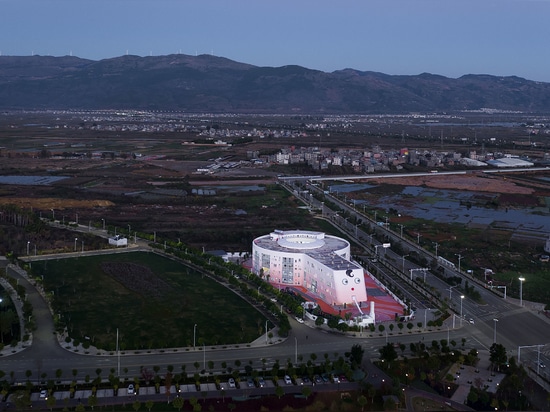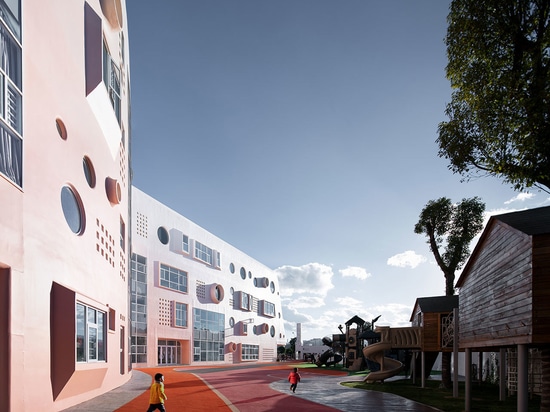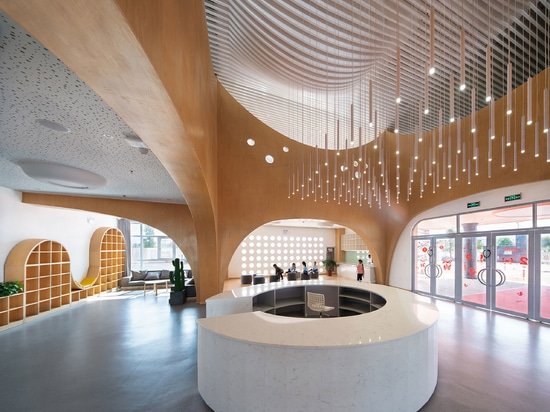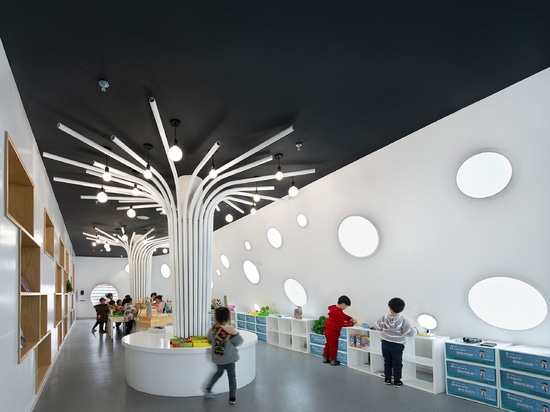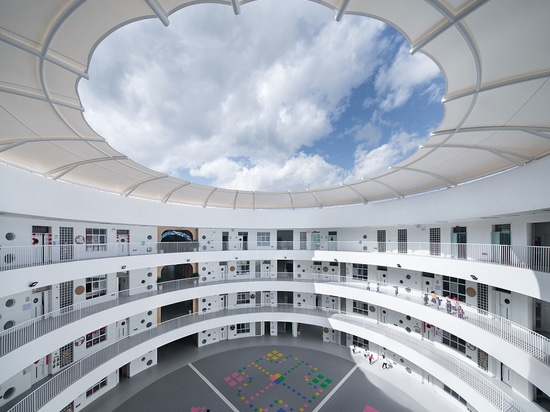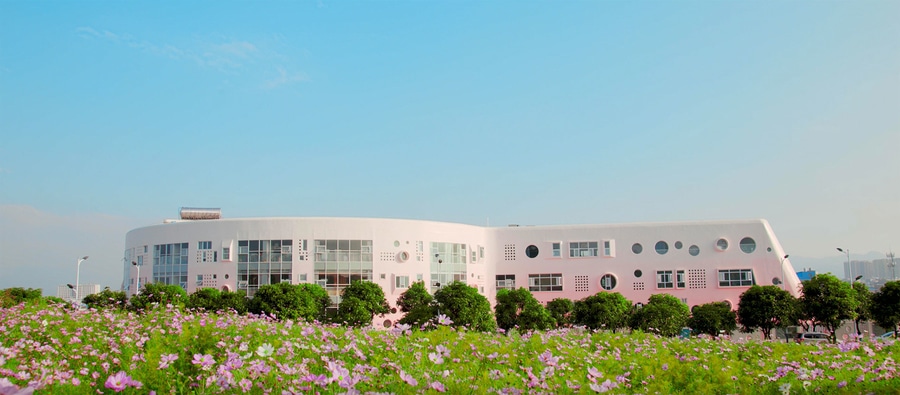
#PUBLIC ARCHITECTURE PROJECTS
A Lollipop-Shaped Kindergarten in China Channels the Unbridled Imagination of Children
Occupying over 10,000 square metres, this massive four-storey kindergarten building in the Yunnan province in China eschews the drab sensibility of concrete buildings of its size by espousing an exuberant architectural language inspired by children’s art.
Chinese practice Dika Architectural Design took a page from the unbridled imagination of children to design a lollipop-shaped building swathed in dreamy candy-pink hues, punctured by a playful hodgepodge of circular and rectangular openings. Complemented by subdued yet whimsical interiors, colour-packed playgrounds, and a four-storey mural of a cartoon baby face out of whose mouth children can slide to the ground, the kindergartner is a joyful welcoming place that nurtures children’s ingrained ability to think outside of the box.
Comprising a cylindrical volume and a rectangular wing, the building was designed with a lollipop in mind, although it could very well have been inspired by a magnifying glass or a balloon on a stick, after all, in the mind of a child one can easily transform into the other and we’re guessing the design team would actually welcome such childlike speculation. Painted in a gradient of pink hues that brings to mind candy and sunsets, the building instantly enchants visitors with its dreamy aesthetic, while the abstract composition of its windows – a graphical assortment of smaller and larger circular and rectangular shapes, some of which playfully stick out of the façades – conveys innocence and cheerfulness, as do the orange and pink-painted shapes in the surrounding playground area which includes multiple sport courts and a running track.
At the heart of the building, a circular, open-air atrium provides an additional playground area punctuated with colourful markings for different games, while providing generous amounts of natural light to the four floors of classrooms. Underpinned by a muted colour palette of white, grey and natural wood, the building’s interior may be less colourful than the exterior but it is imbued with just as much playfulness, courtesy of a series of bespoke furnishings embracing organic and geometric forms. Together with the aforementioned window configuration which creates a dynamic interplay of light and shadow throughout the day, the design team have truly succeeded in creating a wonderland-type environment for children to play, socialise and learn.
